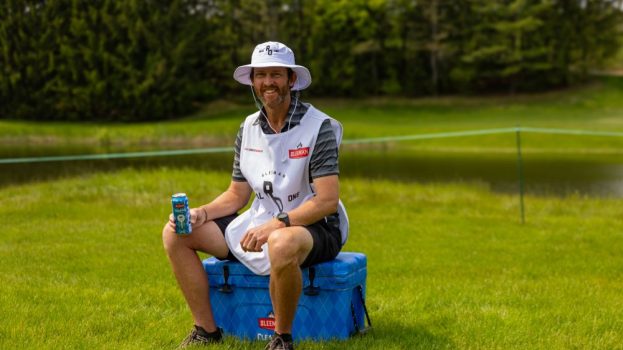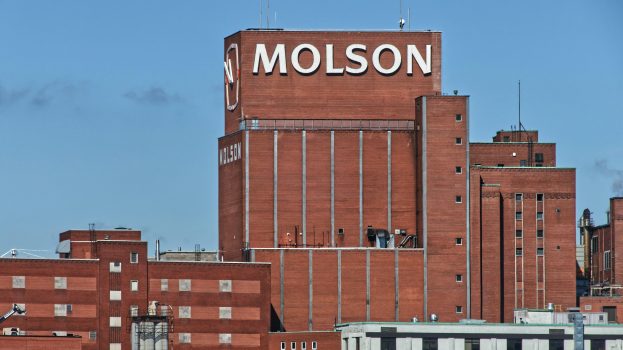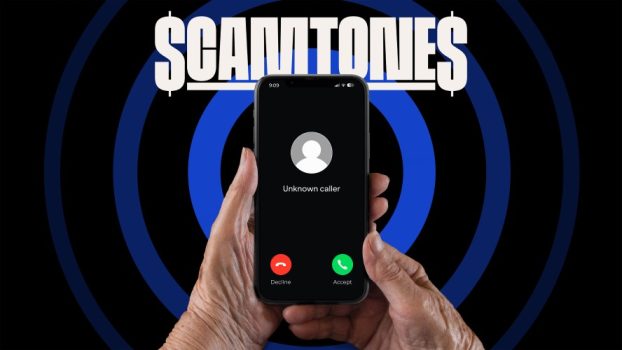You’re reading a story from Strategy C-Suite, a weekly briefing on how Canada’s brand leaders are responding to market challenges and acting on new opportunities. Sign-up here to receive the latest stories.
In January, Andrew Oosterhuis became the latest Labatt veteran to return to Canada with global AB InBev experience.
In returning home – this time as Canadian VP marketing – he follows in the footsteps of marketers like Todd Allen (now global VP of marketing for Budweiser in the U.S.) and president Kyle Norrington, who have spent part of their careers in the globally-facing U.S. market.
Oosterhuis, who joined Labatt in 2007, was named global director of Stella Artois in 2018, then moved into a similar role for Budweiser later that year. At Bud, he was charged with helping develop the first global platform and campaign for the beer brand. “Be a King” was accompanied by global partnerships with the English soccer Premier League and Spain’s La Liga, helping the brand connect with four billion people per year through one of the world’s most popular sports, according to Oosterhuis.
He also helped Budweiser with its COVID response, which included a fresh take on the iconic “Wassup” commercial that called on beer drinkers to check-in on their buds, he says. That work was made in recognition that “mental health was an issue as people became isolated.”
Now back in Canada, he faces a different challenge: leading Labatt’s marketing team into new, high-growth areas, while continuing to build the brewer’s fleet of iconic brands and leveraging the capabilities of its internal Draftline YYZ creative studio.
Oosterhuis spoke to strategy about the lessons learned abroad, the post-COVID beer opportunity, and his affinity for chocolate milk.
[iframe_youtube video = “WTtYeFx2wnQ”]
How has serving in a global role within AB InBev shaped your perspective as a marketer?
It reinforces the power of platforms and the media neutral ideas that underpin them.
Every local marketing director could probably do a more locally relevant campaign. But at global, you’re trying to get the scale and efficiency of doing things that no local market could do on its own. Nigeria can’t go and sign [soccer player Lionel] Messi on its own. But we can at the global level. So that gives us a global platform to have a disproportionate impact around all our markets.
But you need an idea, not an execution, because that’s where the local market can add value; they can localize the execution. Our job was to inspire with a big idea that’s media neutral, then have a toolkit of executions that you work with the local markets to bring that nuance to life.
That was probably my biggest learning, because it’s complex. If you think about the markets for Bud that we’re trying to navigate, you have Brazil, Nigeria, South Africa, India, South Korea, China, Argentina, UK – that’s a big footprint.
Your path is one shared by predecessors like Todd Allen and Kyle Norrington. Why do you think Canadian marketers often get called up to work at the global level, and then return home?
I think it’s been largely driven by the opportunity in Canada to do great work. [At multinational companies, you often rely on global adaptions.] But because of the uniqueness of Canada, and the breadth of the portfolio, we have the opportunity to do our own original work. And I think we built the brand as a market that’s done bold and daring work. That’s allowed us to take that mindset to global.
From a company perspective, diversity of thought is really important to get to better results as a business. So it’s not just Canadians, right? [On the global team] my boss was from the UK. We had an American, somebody from India, somebody from China. So by having these different perspectives, the creative process is the same, but you get to better outcomes with the diversity of thought.
I would have loved to stay [in the U.S.] even longer, because the work is so complex. But by the time you figure it out, you’re on the move again – part of the culture of AB InBev is to keep challenging and pushing for growth. But there’s the benefit of the ideas exchange and the diversity of thought that happens at a global level when you bring different nationalities and perspectives together, and then we come back to our market. We can apply what we learn, but also, we stand as an example that these opportunities exist.
How has the Canadian market changed since you last worked in the country? How are those changes shaping your plans as a marketer?
We call it the “beyond beer” segment. That, to me, didn’t really exist – it was [becoming a trend] as I was leaving. But there’s been a consumer shift towards seltzers, but also the tea category, ciders. Now we’re playing in canned wine with Babe. So there’s the complexity and the amount of brands – I have to be tasting new liquids here for the next month to try to get caught up.
When you’re on a brand, you’re a mile deep – you know everything about the positioning, the DNA. Now I’m a mile wide across a portfolio, and it’s like a mile and a half now with “beyond beer.” That’s probably the biggest change I’ve seen coming back – the size, the complexity and the importance for delivery of our results that sits in “beyond beer.”
The other thing I dealt with globally a bit, but to see in actual practice here in Canada is Draftline. Draftline is a great ambition from the company to transform the way we market by using data, technology and platforms to react quicker to opportunities and creative. Having that in-house creative partner enables us to do that, to move with speed, take advantage of opportunities. That didn’t exist when I was here previously.
What changes are you anticipating for the balance of this year, and next? How are planning amid continued uncertainty in the market?
It’s been a crazy year. It’s important that we recognize that our employees have been stressed. And mental health and wellness is an important thing as leaders that we take the time to talk to our teams. And the best skill as marketers is empathy. We all have to show that – that’s first and foremost. The good news is, there’s clear light at the end of the tunnel.
But it’s not just for us, personally, to get out of the COVID life. Professionally, the light at the end of the tunnel is exciting, because our category brings people together – it has for thousands of years. COVID stopped us from being able to get together. So when that gets in our rearview mirror, we’re calling it euphoria – people are going to be excited to get together again. Creatively, that brings great opportunity for our brands to take advantage of these moments that people will remember for the rest of their lives.
Bonus question: Several years ago, at a restaurant interview with a former Strategy editor, you ordered chocolate milk. Is there a story there? Is it your bev of choice?
I probably had ice cream, too – I’m a big ice cream guy. Is chocolate milk my favourite drink? No. I think my favourite drink has to be Budweiser from the bottle. But I love chocolate milk, especially coming out of university, where I played university football.
People thought there was a perfect ratio of sugars and carbohydrates and protein in chocolate milk, so people used it as an after-workout drink. [Brands understood that] and started advertising and positioning it that way. So I think my affinity for chocolate milk comes from my time in college.
This interview has been edited for length and clarity. It is part of a series for Strategy C-Suite, a weekly briefing on how Canada’s brand leaders are responding to market challenges and acting on new opportunities.
























